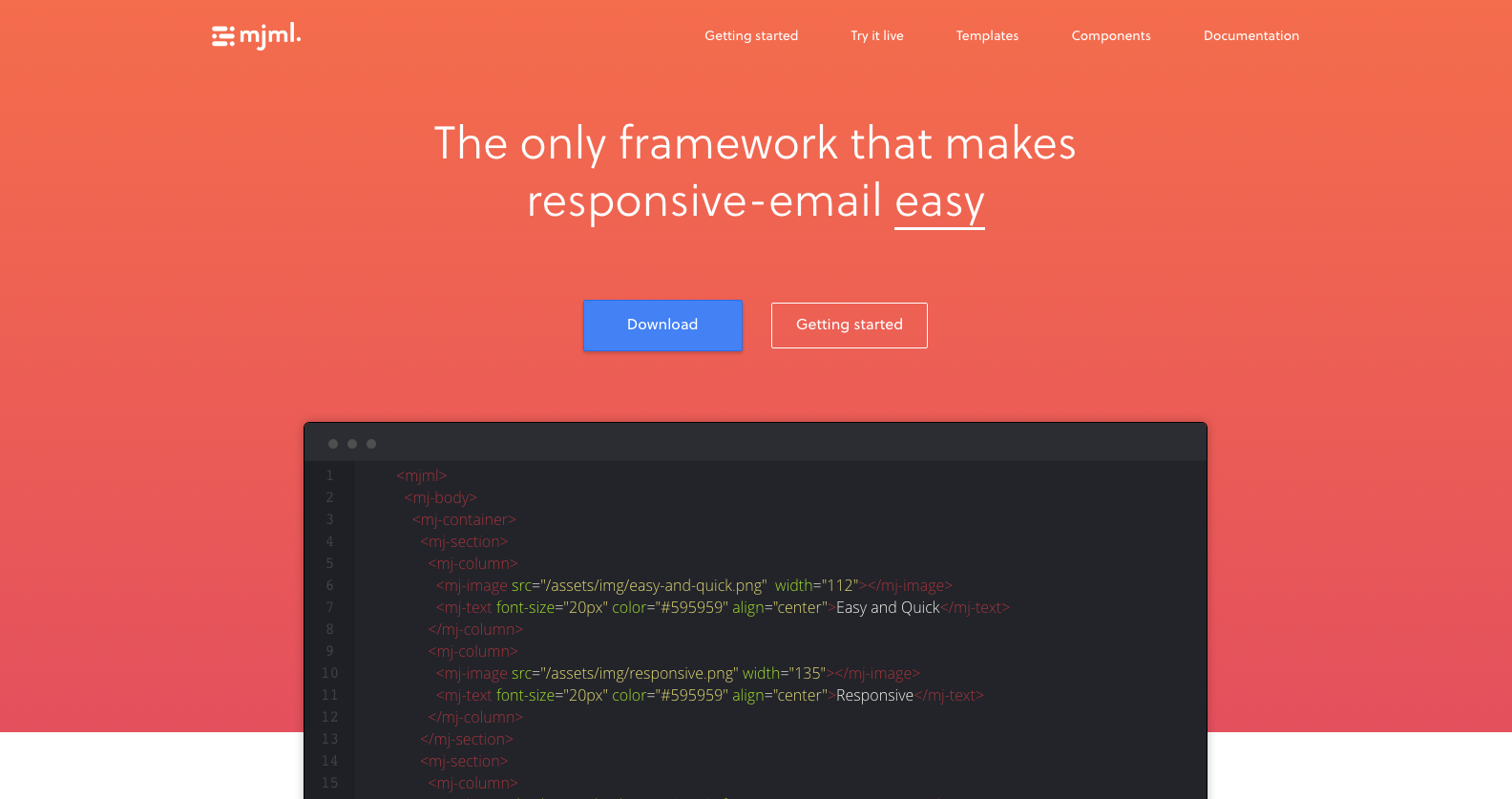
- #Mjml template how to
- #Mjml template install
- #Mjml template code
- #Mjml template Offline
- #Mjml template download
#Mjml template download
To begin, you download a set of HTML files or check them on GitHub. It is an HTML email framework with pre-built grid options and basic components. Email FrameworkĪccording to our metrics, Email Framework is the winner in this category, with 1.3k stars on GitHub. Here we also referred to the number of stars on GitHub (as of August 2019). The only difference is that here you use traditional HTML /CSS instead of a new type of markup. The use cases are the same as with frameworks that use custom tags. They are usually also implemented as a Node.js build system. HTML/CSS email frameworks include a set of pre-built components and use pure HTML/CSS for building emails. Responsive HTML or CSS email frameworks What is it?
#Mjml template how to
You will easily find examples and guides on how to use it on both the website and on GitHub.
#Mjml template install
It is an XML-based markup language, which is an npm module you install and use in Node.js. HEML by SparkPost closes our list of custom tag frameworks, with 4.1k stars on GitHub. Edit and preview emails online with Slinky HEML It asserts general compatibility with 30+ versions of popular email clients.įoundation for Emails doesn’t have its own online editor, but you can try Slinky, an experimental tool by Zurb, which allows you to edit Inky online via CodePen. 11 customizable responsive HTML templates.a web inliner for CSS along with the build of Sass.
#Mjml template code
#Mjml template Offline
You can start using it online (with its online editor) as well as offline (download the engine as a binary file and install locally with npm). It is also well documented, which is emphasized by many framework users. Then MJML transpiles them into a responsive HTML.Īt first glance, we liked its user-friendly website, which features several examples and templates you can check out and try on the go. MJML stands for Mailjet Markup Language, so you as a user work with its custom components and tags. We used the number of GitHub stars (as of August 2019) to determine popularity. You need such an email framework when you have to implement multiple custom email templates with your team, have a certain level of coding skills but can’t / don’t want to bother with HTML/CSS, or would like to automate your workflow. In most cases, it is an engine built with the JavaScript library. Responsive email framework with custom tags is a specialized markup language. Responsive email frameworks with custom tags What is it? Let’s review the most mentioned options, sort them all out, and check their popularity on GitHub.

In most reviews and comparisons, you get a solid list of tools where email frameworks, patterns, and templates are mixed up together.

When it came to more advanced email development options, we faced another question: how to choose a responsive email framework. Then we researched the available options to determine the best for building beautiful emails, focusing on the types of tools available, and mostly drag and drop email editors. At first, we were totally bewildered by the list of email builders, editors, generators, boilerplates, templates, etc. In this situation, it is easy to get confused choosing the right type of tool you need, as well as about which exact email builder to go for. It’s no wonder we’re getting more and more tools for responsive email building. In addition, we have to consider how to display emails on different types of screens and devices. As of now, there are no unified rules for email rendering in email clients.


 0 kommentar(er)
0 kommentar(er)
